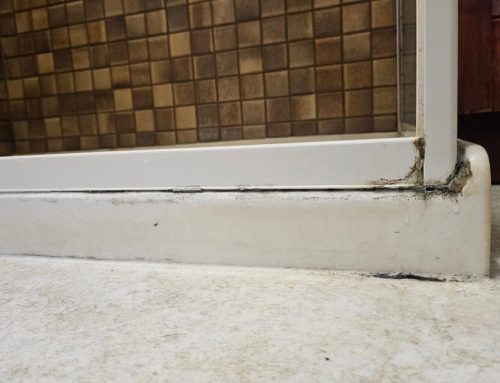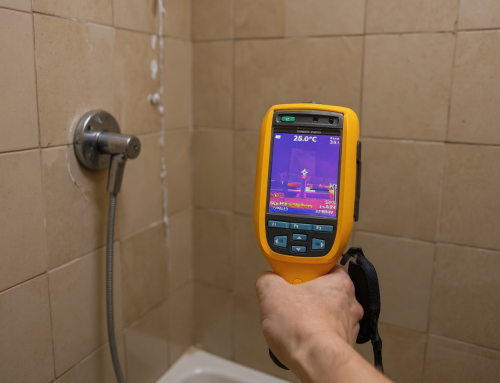Ever wondered if your water bill is a bit steep, or if there’s a sneaky leak draining your hard-earned cash? Well, learning how to read your water meter can actually help you spot a leak and save a fair bit of water. It’s not as tricky as it sounds, and it gives you a bit of control over your water use. We’ll walk you through it, so you can become a bit of a pro at checking for those hidden drips and trickles.
Key Takeaways
- Finding your water meter helps you keep an eye on your water use and find leaks.
- Knowing if you have an analogue or digital meter changes how you read it.
- Small movements on your meter, even when no water is on, might mean you’ve got a leak.
- Checking your meter regularly can help you catch leaks early, saving you money and water.
- If you think you have a leak, you can do a simple test with your meter to confirm it.
Why Reading Your Water Meter is Crucial for Leak Detection
The Cost of Undetected Leaks
Ignoring a water leak can really hit your wallet hard, mate. What starts as a small drip can quickly turn into a major expense. Think about it: that constant trickle adds up on your water bill each month. And it’s not just the water you’re paying for; undetected leaks can lead to structural damage to your home. We’re talking about rotting wood, mould growth, and even foundation problems. These issues can be incredibly costly to fix, often requiring a water leak detection plumber & repair burst pipes to sort out the mess. So, keeping an eye on your water meter is a simple way to avoid a financial headache down the line.
Environmental Impact of Water Waste
It’s not just about the money; wasting water has a real impact on the environment. In Australia, we know how precious water is, especially with droughts and water restrictions being a regular thing. When you let a leak go unfixed, you’re contributing to unnecessary water waste. This puts a strain on our water resources and can affect the environment. By regularly checking your water meter, you’re doing your bit to conserve water and protect our planet. It’s a small effort that can make a big difference.
Fixing leaks promptly helps conserve water, reducing the demand on local water supplies and minimising the energy needed to treat and distribute water. This contributes to a more sustainable environment for everyone.
Locating Your Water Meter
Common Meter Locations
Alright, let’s get down to brass tacks and find your water meter. You’ll usually find it lurking near the front of your property. Think nature strip, close to the kerb, or footpath. Sometimes, it might be on a side boundary, especially if you’re on a corner block. In newer estates, they can even be tucked away at the back.
Look for a rectangular or circular lid, often made of concrete or heavy-duty plastic, and it should be marked with ‘Water Meter’. If you’re in an older area, the cover might be metal. If you’re having a hard time spotting it, try to imagine a direct line from the water main in the street to where your main outdoor tap is located – the meter is often somewhere along that line.
Safety Precautions When Accessing Your Meter
Right, before you go yanking open that meter box, a few things to keep in mind for your safety.
- First off, give the lid a good prod with your foot or a long-handled tool before you try to lift it. You never know what might have made a home in there – spiders, snakes, you name it!
- Wear some sturdy gloves. Not only will they protect you from any critters, but they’ll also stop you from getting a rusty surprise.
- Use a flathead screwdriver or a similar tool to carefully pry the lid open. Don’t go overboard; you don’t want to crack the lid or damage the meter itself.
- If the lid is really stuck, don’t force it. Give your local water authority a bell; they’ll be able to help you out without causing any damage.
It’s always better to be safe than sorry. Take your time, be cautious, and if you’re not comfortable doing it yourself, get a professional to lend a hand. After all, a small leak is better than a trip to the emergency room!
Understanding Your Water Meter: Types and Components
It’s important to know what kind of water meter you have and how it works. This knowledge will make spotting leaks much easier. Let’s take a look at the different types and the key parts you need to be aware of.
Analogue vs. Digital Meters
There are two main types of water meters you’ll likely encounter: analogue and digital. Analogue meters are the older style, featuring a series of dials and a mechanical display. Digital meters, on the other hand, use an electronic display to show your water usage.
- Analogue meters are generally read manually by looking at the position of the dials.
- Digital meters often have the ability to transmit data remotely, but you can still read them directly from the display.
- Some digital meters might need a light shone on them to activate the display.
Key Components to Identify (Sweep Hand, Leak Detector, Odometer)
Regardless of whether you have an analogue or digital meter, there are a few key components you should be able to identify. These will help you determine your water usage and detect potential leaks.
The odometer is the part that displays the total amount of water that has passed through the meter. It’s usually displayed as a series of numbers, similar to the odometer in your car.
- Sweep Hand (Analogue Meters): A large, circular dial that measures water flow in smaller increments. Each rotation represents a specific amount of water, like 10 litres.
- Leak Detector (Analogue Meters): A small, often star-shaped dial that spins even with very small amounts of water flowing through the meter. If this is moving when all your taps are off, you likely have a leak.
- Digital Display (Digital Meters): Shows the current water usage and may also include a leak indicator or alarm.
Understanding these components is essential for accurately reading your meter and identifying any unusual water usage patterns. Take some time to familiarise yourself with your specific meter model. This will save you money and water in the long run.
Step-by-Step Guide to Reading Your Water Meter for Leaks
The Initial Reading
Right, let’s get down to brass tacks. To figure out if you’ve got a leak you’ll need to take an initial reading of your water meter. Here’s how:
- Turn off all taps and water-using appliances. That includes the washing machine, dishwasher, and any outdoor taps. Make sure no one’s flushing the loo either!
- Locate your water meter. They’re usually near the front of your property, often under a small lid. Lift the lid carefully.
- Note the reading on the meter. For an analogue meter, read the numbers like a car odometer, including any fixed zeros. For a digital meter, the reading will be displayed on the screen. You might need a torch to see it properly.
- Make a note of the reading. Write it down, take a photo – whatever works for you. This is your baseline.
Interpreting the Results: What to Do If You Suspect a Leak
Okay, you’ve got your initial reading. Now for the waiting game. This is where you find out if you’ve got a sneaky leak costing you money.
- Wait for at least 20-30 minutes, making absolutely sure no water is used during this time. This is important!
- Take another reading of your water meter, using the same method as before.
- Compare the second reading to your initial reading. If the numbers have changed, even slightly, you’ve likely got a leak somewhere.
If you suspect a leak, the next step is to try and narrow down its location. Check all your taps, toilets, and visible pipes. Don’t forget to check for leaks in the kitchen, as these can often go unnoticed for a while. If you can’t find the source, it might be time to call in a professional plumber.
Here’s a simple table to help you interpret the results:

If you do find a leak, don’t delay in getting it fixed. Even a small drip can waste a surprising amount of water over time, and that adds up on your bill!
Wrapping Up
So, there you have it. Checking your water meter is a simple, effective way to keep an eye on your water use and catch any sneaky leaks early. It’s a bit like being a detective for your own home, and it can save you a fair bit of money and water in the long run. Knowing how to read your meter puts you in charge, helping you manage your household’s water and avoid any nasty surprises on your bill. Give it a go; you might be surprised at what you find!
Frequently Asked Questions
Where can I find my water meter?
Your water meter is usually found in a box in your front yard, often close to the street. It might be in line with an outdoor tap on your house. If you live on a corner block, it could be on the side. Some older homes might even have them in the back alley. The box will usually have ‘WATER’ written on it.
How do I safely open my water meter box?
You can use a large, flat screwdriver or a similar tool to gently lift the lid of the meter box. Be careful, as these boxes can sometimes be home to insects or small critters. Once the lid is off, you’ll see the meter face, possibly under another small protective cover.
What is the difference between an analogue and a digital water meter?
An analogue meter has numbers that turn like an odometer in a car, showing your total water use. It also has a big red hand that spins for every 10 litres and a small star-shaped wheel that moves even for tiny amounts of water. A digital meter shows numbers on a screen, and you might need to shine a light on it to make the display appear.
How do I use my water meter to check for a leak?
First, turn off all taps and water-using appliances, like your washing machine or dishwasher. Then, check your meter. If it’s an analogue meter, watch the small star-shaped wheel or the big red hand. If they’re moving, you have a leak. On a digital meter, if the numbers are changing or if you see a ‘flow rate’ other than zero, there’s a leak.
What should I do if I think I have a leak after checking my meter?
If you suspect a leak, take an initial reading from your meter. Then, make sure no one uses any water for at least 30 minutes (or even an hour if you can). After this time, take another reading. If the numbers have changed, it means water has been flowing, and you likely have a leak.
How can I tell if a leak is inside or outside my house?
If your meter shows a leak, the next step is to figure out if it’s inside or outside your house. Turn off the main water valve to your home (usually near the meter). Then, repeat the leak detection steps. If the meter still shows water moving, the leak is in the pipe leading to your house. If it stops, the leak is somewhere inside your home’s plumbing.














